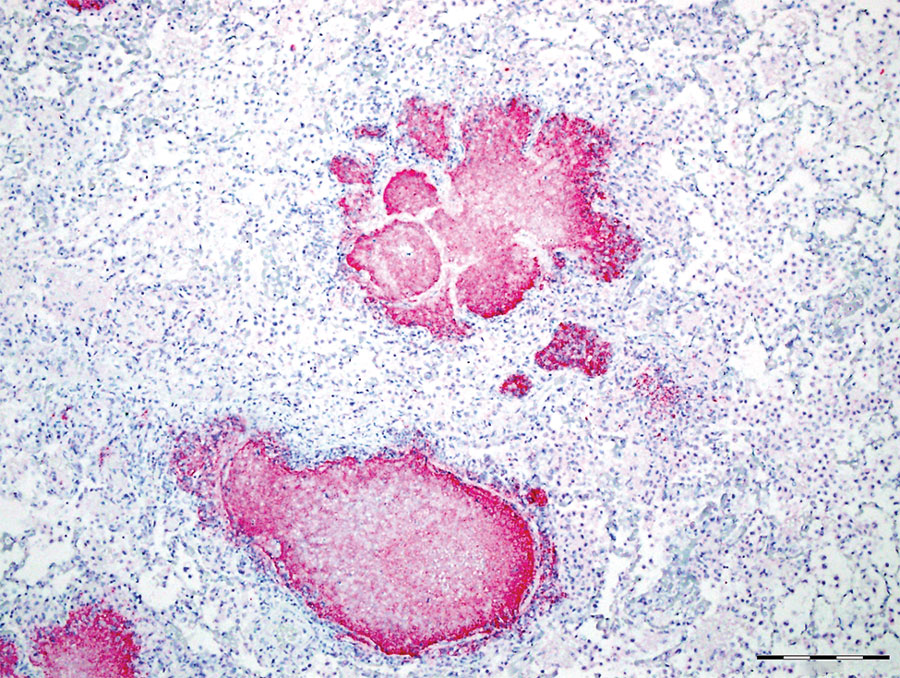Volume 26, Number 12—December 2020
Synopsis
Mycoplasma bovis Infections in Free-Ranging Pronghorn, Wyoming, USA
Figure 4

Figure 4. Caseonecrotic lung lesions in free-ranging pronghorn found to be strongly immunopositive for Mycoplasma bovis antigen by immunohistochemical analysis, Wyoming, USA, February–April 2019. Positive staining indicated by fast red coloring has strong intensity and specificity for lesions centered on bronchioles. Scale bar indicates 1 mm.
Page created: September 30, 2020
Page updated: November 19, 2020
Page reviewed: November 19, 2020
The conclusions, findings, and opinions expressed by authors contributing to this journal do not necessarily reflect the official position of the U.S. Department of Health and Human Services, the Public Health Service, the Centers for Disease Control and Prevention, or the authors' affiliated institutions. Use of trade names is for identification only and does not imply endorsement by any of the groups named above.